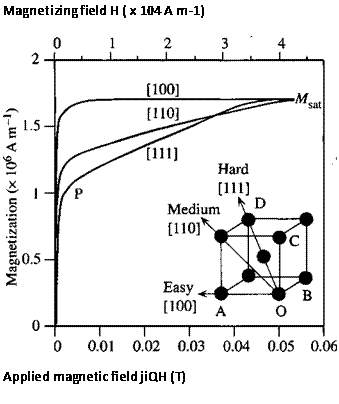Charting the magnetocrystalline anisotropy energy in iron space
Charting the magnetocrystalline anisotropy energy in iron space
Promotor(en): S. Cottenier, S. Claessens /20MAT04 / Solid-state physicsProbleemstelling:
Magnetic materials appear in a variety of engineering applications. Soft magnetic materials are used in motors, generators, electromagnets, transformers,… Hard magnetic materials appear in loudspeakers, sensors, memory,… The terminology soft/hard refers to the amount of energy that is required (little / a lot) to change the orientation of the magnetization of the material. The fundamental physical quantity that is behind, is the Magnetocrystalline Anisotropy Energy (MAE).
When searching for the ideal material for a particular application, the magnetic properties are often only one of many requirements that need to be satisfied. There might, for instance, be restrictions on density, hardness and toughness. And there can be mundane limitations imposed by price or ease of supply. Many of these requirements and limitations are well-documented. The MAE, however, is experimentally determined for only a limited number of materials.
MAE is a property that can be predicted by atomistic simulation methods for materials, such as Density Functional Theory (DFT). And that’s often a faster approach then buying a sample of the material and performing a delicate magnetization experiment. In this thesis you will apply DFT to calculate the MAE for a series of crystals on which no experimental studies have been performed yet. In this way, you might identify materials that would be convenient for particular applications, but which were not yet considered for that purpose as yet.
Doelstelling:
You will explore an existing database of known crystalline materials, to extract a subset that is promising for a particular application. After having trained yourself in performing reliable DFT calculations to predict the MAE of a crystal, you will apply this method to the materials in this subset. Trends in the MAE across the subset will emerge, that might require a physical interpretation and discussion. You will end up suggesting a few crystals that are most promising for further experimental or computational examination. All computational methods required for this work, will be taught in the course ‘Computational Materials Physics’ (prerecorded lectures and hands-on tutorials are available at any time at www.compmatphys.org).

- Study programmeMaster of Science in Engineering Physics [EMPHYS], Master of Science in Sustainable Materials Engineering [EMMAEN], Master of Science in Physics and Astronomy [CMFYST]Keywordsmagnetocrystalline anisotropy energy, coercivity, hard magnets, soft magnets, density-functional theoryReferences
https://doi.org/10.1016/j.jmmm.2019.01.061 (just one recent paper that sketches the kind of physics and methods)
